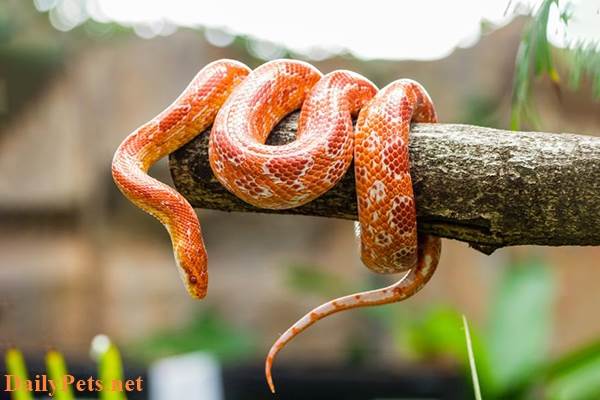Are snakes, reptiles, mammals, amphibians, or something entirely different? Read on as we delve deeper into snakes and how we classify them taxonomically. We’ll also explore their habitats, diets, and other fascinating facts you might not know about these mesmerizing serpents.
Are Snakes Reptiles or Amphibians?
Snakes are reptiles! Taxonomically speaking, all snake species belong to the Reptilia class. This vast group includes animals such as lizards, turtles, crocodiles, and tuataras. Most reptile species are tetrapods, meaning they have four limbs, but snakes are a bit unique in that they evolved from lizards and have lost their limbs.
Other Shared Features Among All Reptile Species Include:
- The presence of scales (or scutes, in the case of turtles) covering their bodies;
- Reliance on the environment to maintain body temperature, meaning they are ectothermic or cold-blooded;
- Internal bone structure and vertebral column, making them vertebrate animals
- The presence of at least one lung for respiration rather than gills;
- Reproduction through laying eggs, although some reptile species can give birth to live young by allowing the eggs to hatch inside their bodies (a feature known as ovoviviparity).
Reptiles are an ancient group of animals that first evolved from amphibians around 300 million years ago! They gradually branched off from their amphibian ancestors and transitioned to predominantly terrestrial living. However, many snake species today are adept swimmers and highly aquatic.
We can classify snakes as members of the Squamata order, a group of reptiles that includes lizards and snakes. Within that group, snakes belong to the Serpentes suborder. There are nearly 4,000 different snake species within this suborder!

Snakes are reptiles!
Snakes are particularly unique among lizards in their lack of limbs, more joints in their skull, and a highly flexible jaw to consume much larger prey. Due to their elongated and slender bodies, their organ arrangement differs from that of lizards. Most snake species have only one functional lung. While they lack limbs, many snake species have tiny remnants of legs on either side of their cloacal opening, called pelvic or anal spurs.
How Many Types of Snakes Are There?
The Serpentes suborder currently encompasses over 3,900 distinct snake species! This suborder has over 20 different snake families and over 500 unique genera. These smaller groups help us further classify snake species based on shared physical characteristics and behaviors.
Like most animal species, all snakes have a common name and a Latin classification name that indicates their genus and species. For example, the common classification name for the garter snake is Thamnophis sirtalis. This is because the genus it belongs to is Thamnophis, while its specific species within that genus is called sirtalis.
Snakes come in a wide range of sizes. The world’s shortest and smallest snake species are tiny thread snakes that measure only about 4 to 5 inches in length. On the other hand, the largest snake species, such as the green anaconda and reticulated python, can grow to over 20 feet in length and often weigh more than 150 pounds!
Extinct snake species were much larger! For example, the massive Titanoboa cerrejonensis lived about 60 million years ago and typically measured between 40 to 50 feet in length and weighed up to 2,000 pounds. That’s larger than the average school bus!
Where Do Snakes Live?
Today, snakes inhabit every continent except Antarctica. That’s bad news for ophidiophobes but quite fascinating if you’re a snake enthusiast! While most species thrive in tropical, warm, and humid regions due to their ectothermic nature, snakes are highly adaptable. They have evolved to comfortably inhabit various environments, from forests and swamps to deserts and savannas.
Certain species can live primarily on land, spending most of their time above ground or in trees, while others live predominantly underground. For example, flying snakes and tree-dwelling snakes are arboreal. They have adapted well to life high up in densely vegetated tree canopies.
Some snake species, such as sea snakes, have even evolved to spend most of their lives in water. They have broad tails resembling paddles for efficient swimming and can hold their breath underwater for extended periods, breathing through their skin!
Are Snakes Carnivores?
All snake species are carnivorous, meaning they must consume other animals to survive and cannot digest plant matter. Generally, they have a slow metabolic rate and a prolonged digestion process, so they feed only every few weeks. However, the specific types of prey that snakes eat vary based on size, species, and habitat.
For example, smaller snake species like garter snakes and corn snakes primarily eat small rodents, birds, and their eggs. Larger species like the Gaboon viper can consume larger prey such as guineafowl, rabbits, and frogs. The world’s largest snakes, such as reticulated pythons and king cobras, are capable of subduing animals like deer, wild pigs, and even other snake species!
The snake’s habitat also dictates much of its diet. Aquatic snakes like kraits and water snakes primarily eat fish and amphibians. Meanwhile, terrestrial and fossorial snakes might prey on small rodents like mice and voles and even small reptile species like small lizards. Arboreal snakes often spend significant time in trees and feed on birds and their eggs.
In Conclusion, snakes are intriguing creatures with a long evolutionary history and a diverse range of species. Their adaptations to various environments, unique feeding habits, and incredible diversity make them a fascinating subject of study. Whether you’re fascinated by their biology or simply amazed by their beauty, snakes continue to captivate and intrigue us.





